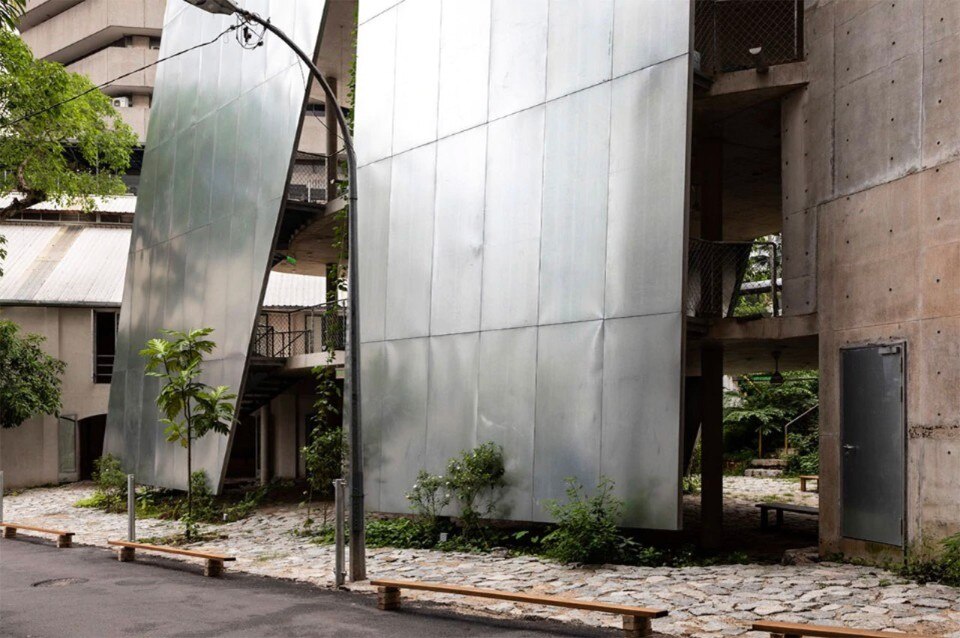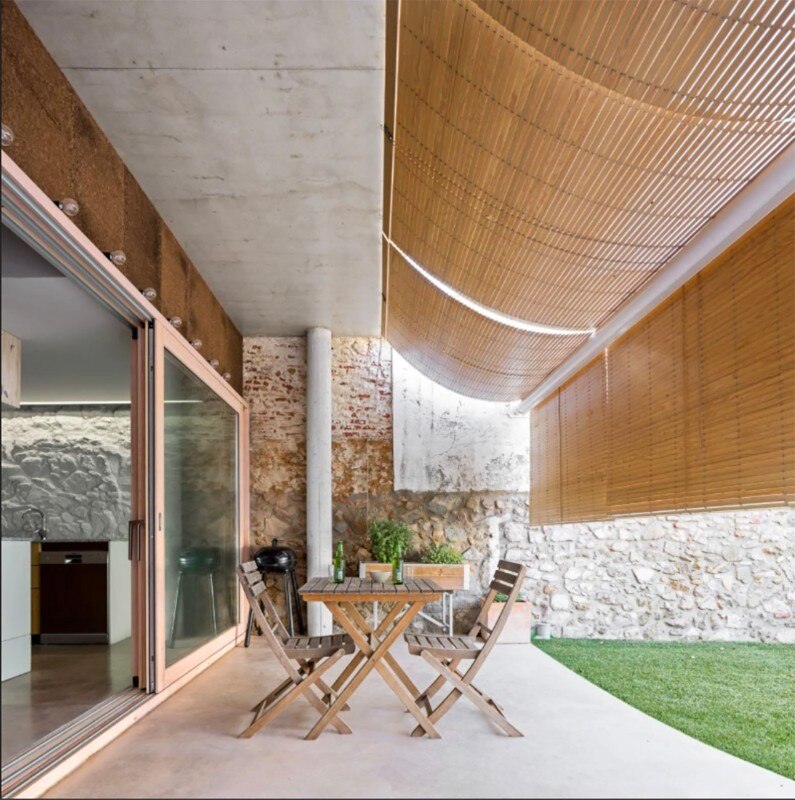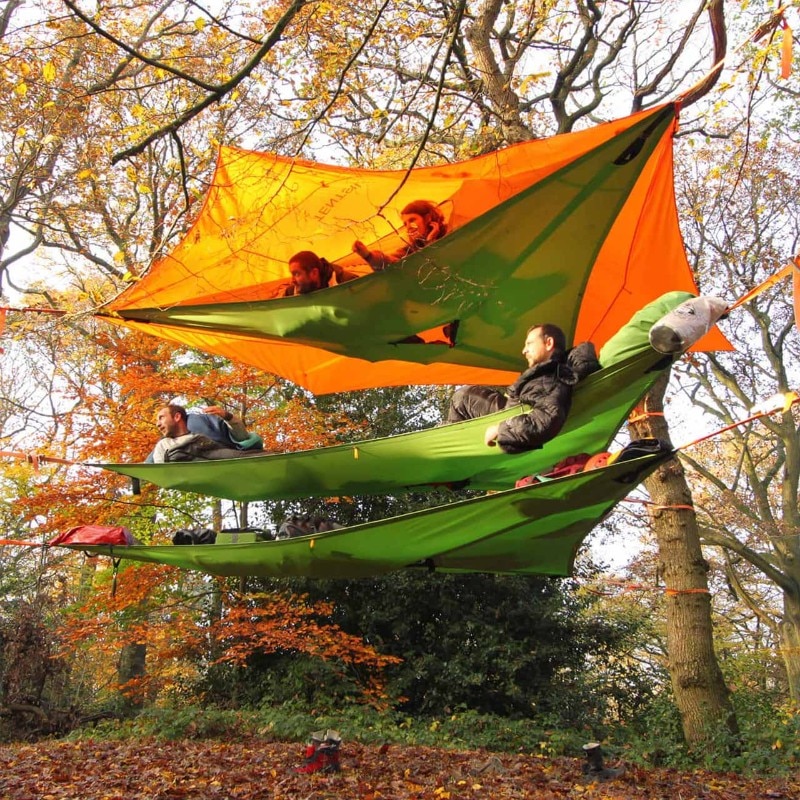In-and-out fluidity
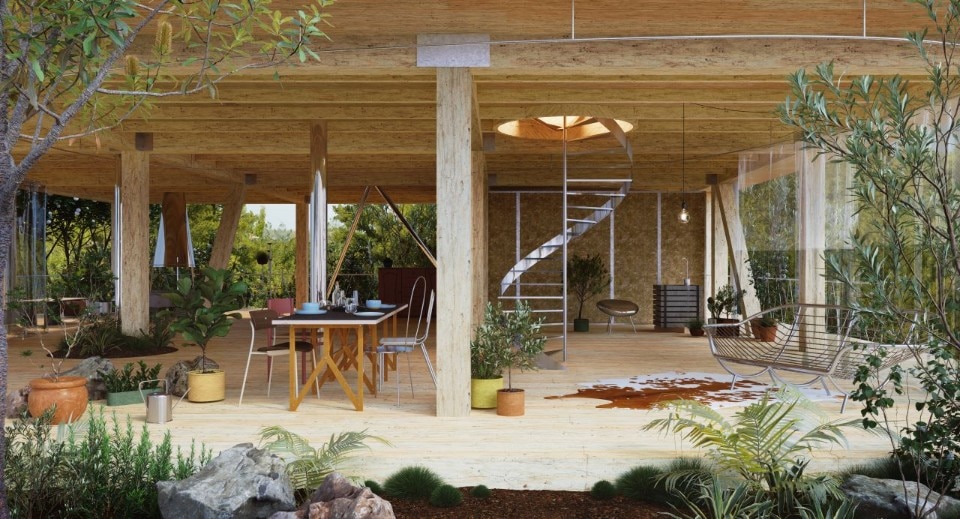
 View gallery
View gallery

Come saranno le case del futuro in Australia
Rendering Charles Cho
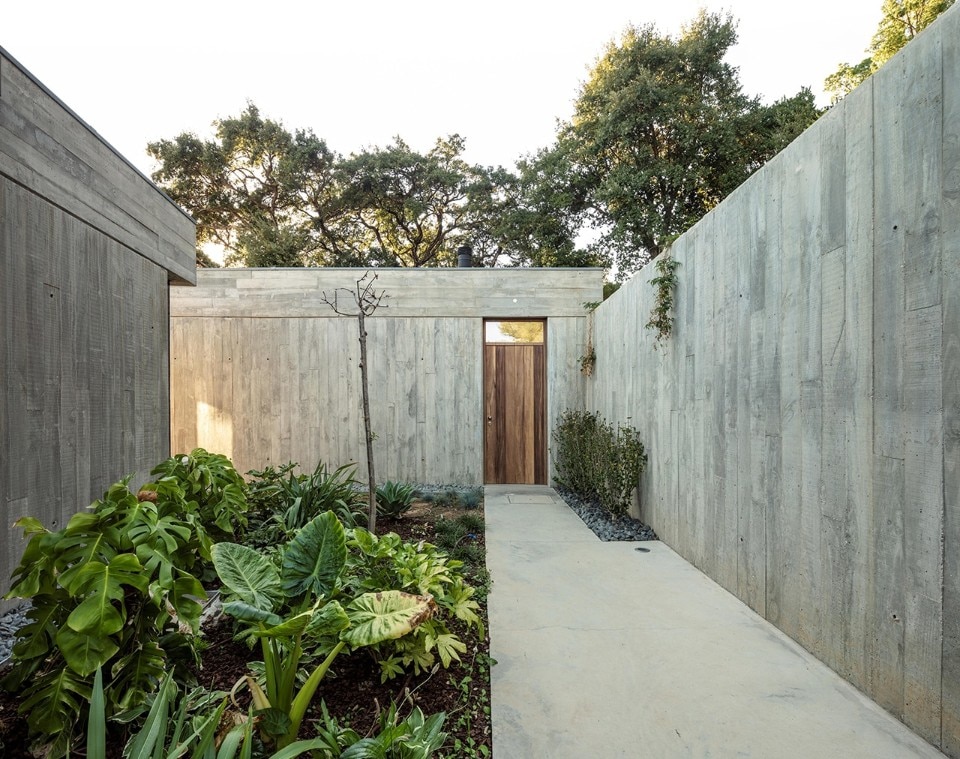
Semplici volumi in cemento a vista per una casa sulle colline portoghesi
Foto FG+SG - Fernando Guerra
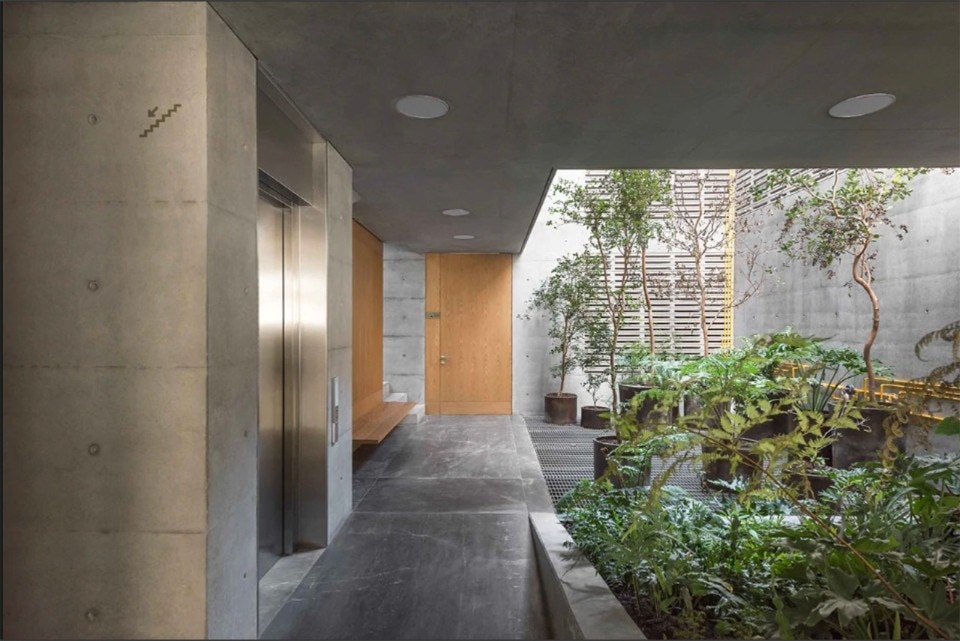
Il minimalismo concreto di un edificio residenziale a Città del Messico
Foto LGM Studio, Juan Benavides
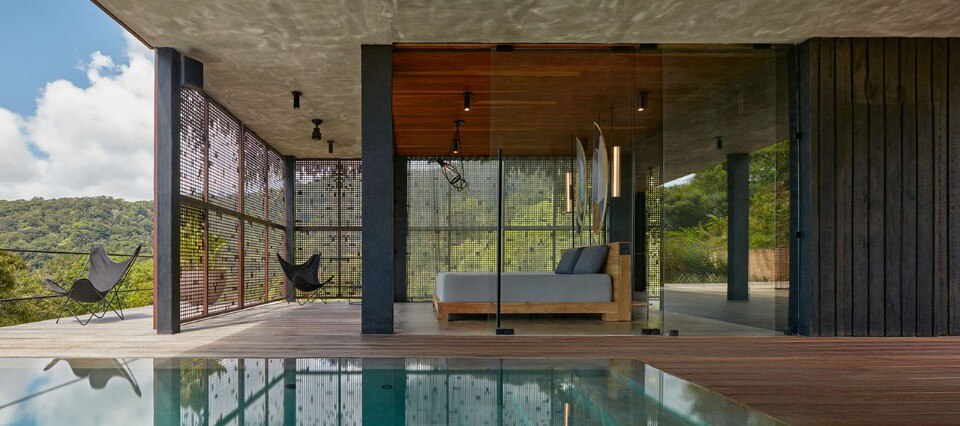
Tra lusso e natura selvaggia: una villa mimetica in Costa Rica
Foto Boys Play Nice
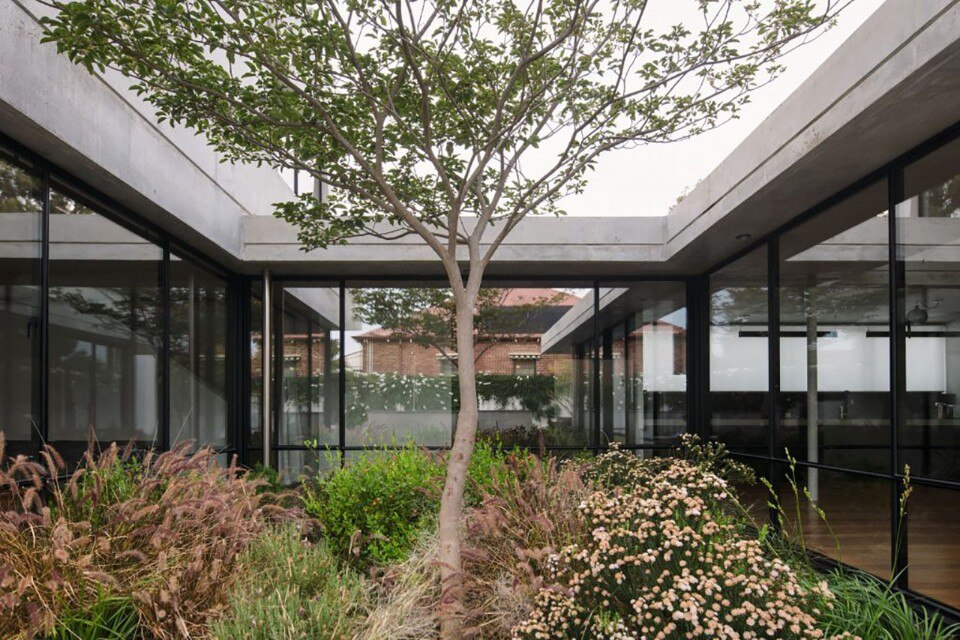
Una casa antica e contemporanea nel sobborgo australiano
Foto Benjamin Hosking
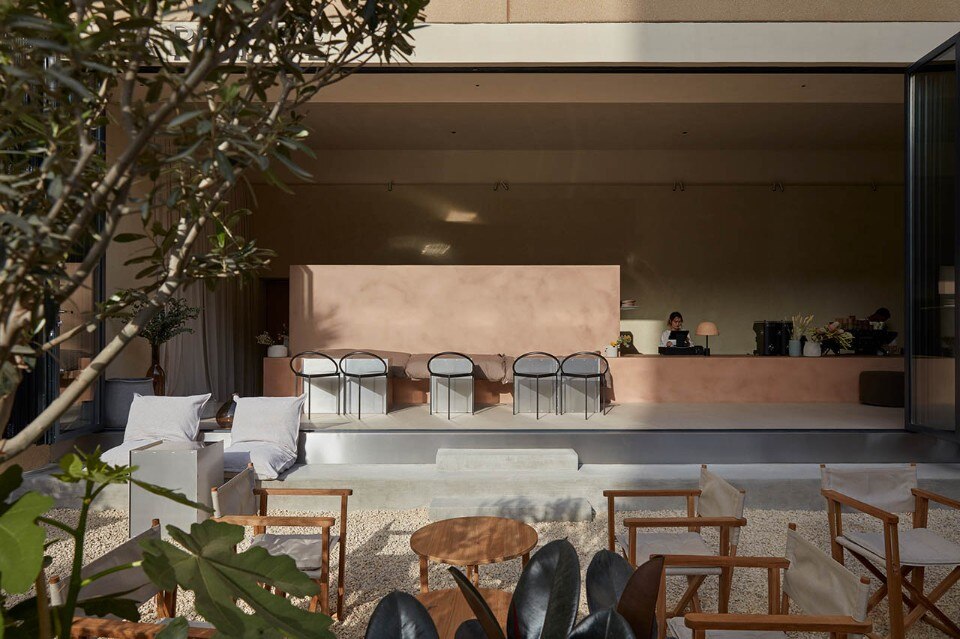
La Petite, un caffè nel deserto in chiave minimalista
Foto Oculis Project
When the climate zone is favourable, the boundary between inside and outside becomes more and more indefinite, thanks to open walls and sliding curtains. This lack of characterization of the spaces supports informal and constantly evolving lifestyles. On the other hand, when the house keeps its perimeter intact, nature enters the home. This goes beyond the mere decorative nature of a potted plant: nature creates a demineralized space, where the coexistence with vegetation imposes itself as a new, reassuring normality.
The filter zone
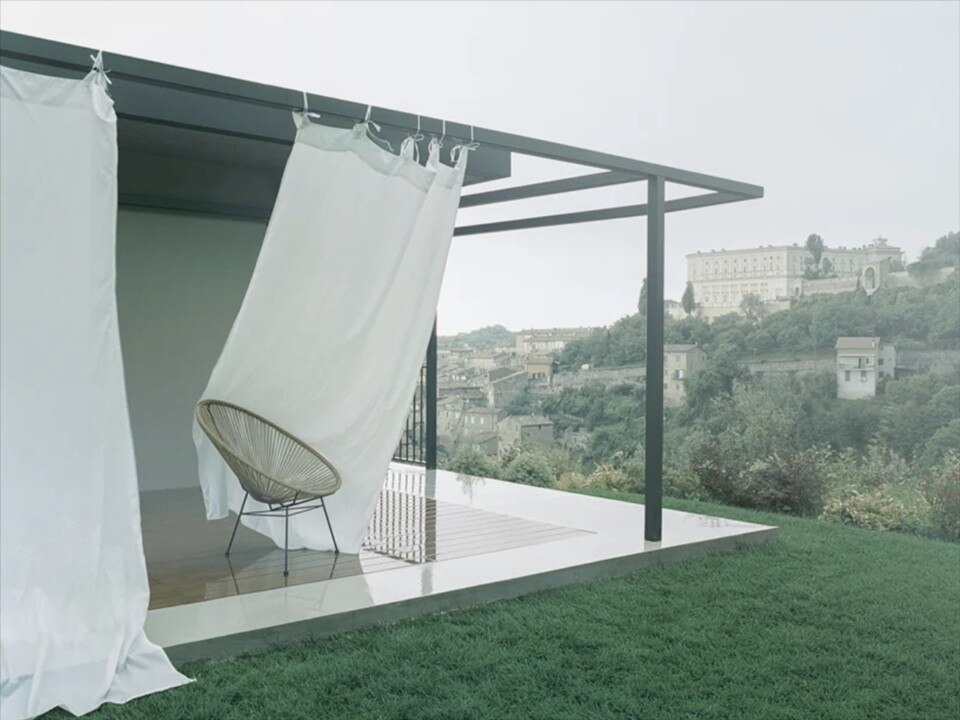
 View gallery
View gallery

Un telaio metallico avvolge una casa nelle campagne laziali
Foto Simone Bossi
How to create a curtain capable of mediating between the inside and the outside of a building, regulating the degree of osmosis through a new volumetry? To fulfil this membrane-like function, metal reinforcements where to hang curtains that allow to adjust the shade and the view, or soft straws that stretch out towards the garden, create new spaces for resting, relaxing, or waiting.
Mirrored camouflage
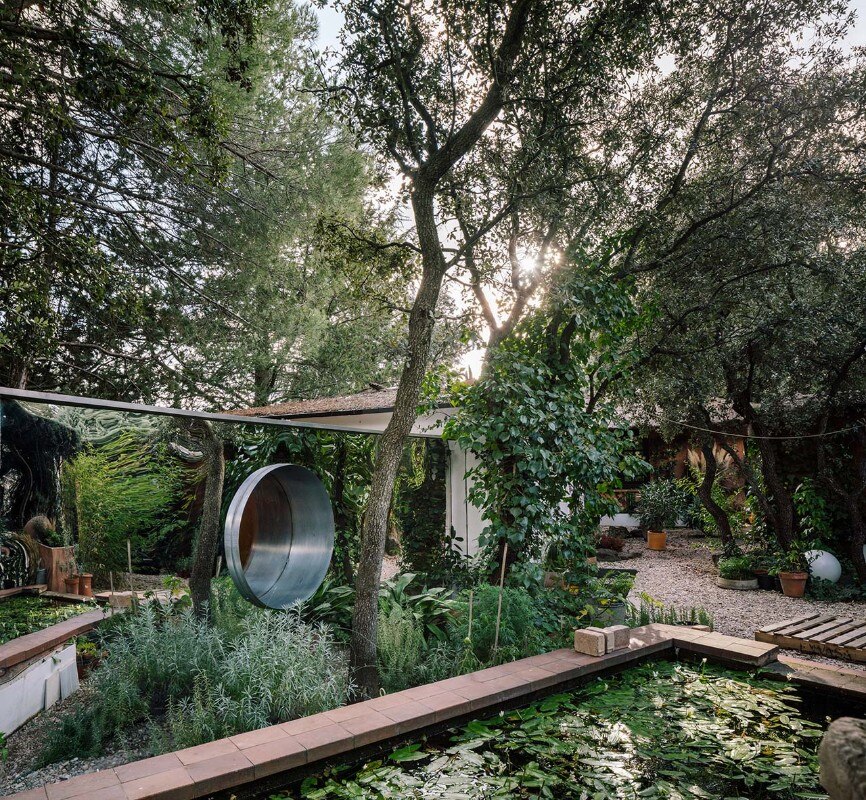
Multiplied greenery obtained thanks to an unexpected mirrored wall, in a renewed dialogue with the surrounding vegetation. All this can be found in a house in Madrid, where the Spanish studio delaVegaCanolasso designed an extension capable of camouflaging itself among the thick vegetation, multiplying its green reflections and renewing our desire to connect with plants, even if only through a clever deception.
A view of the sky
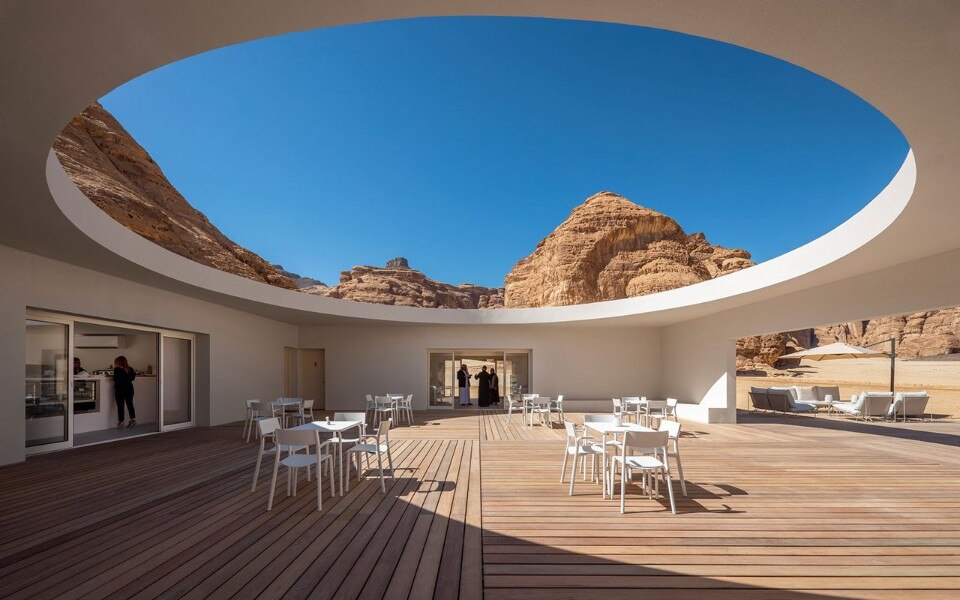
The view of the sky is certainly the most underestimated among all the views architecture can create. To overcome this carelessness and create a relationship with an exceptional natural context, some projects choose large circular openings in the ceiling as a way to emphasize verticality, creating a direct communication with the stars.
Indoor forest
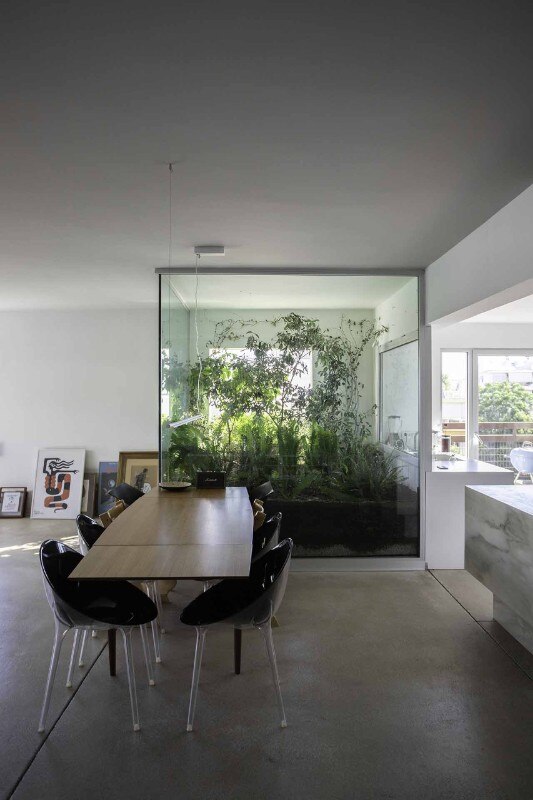
Where it is not possible to indulge in the privilege of enjoying outdoor spaces in the city, greenhouses and herbariums invade the domestic interiors. The multiplication of greenery takes place thanks to large structures that exceed the ambition to contribute to food production, which is still cumbersome compared to much easier ways to obtain fruit and vegetables. Rather, the premise seems to be that of inserting a simulacrum of vegetation, not yet officially aimed at purifying air, but capable of inducing a positive feeling of holistic well-being.
Hammocks
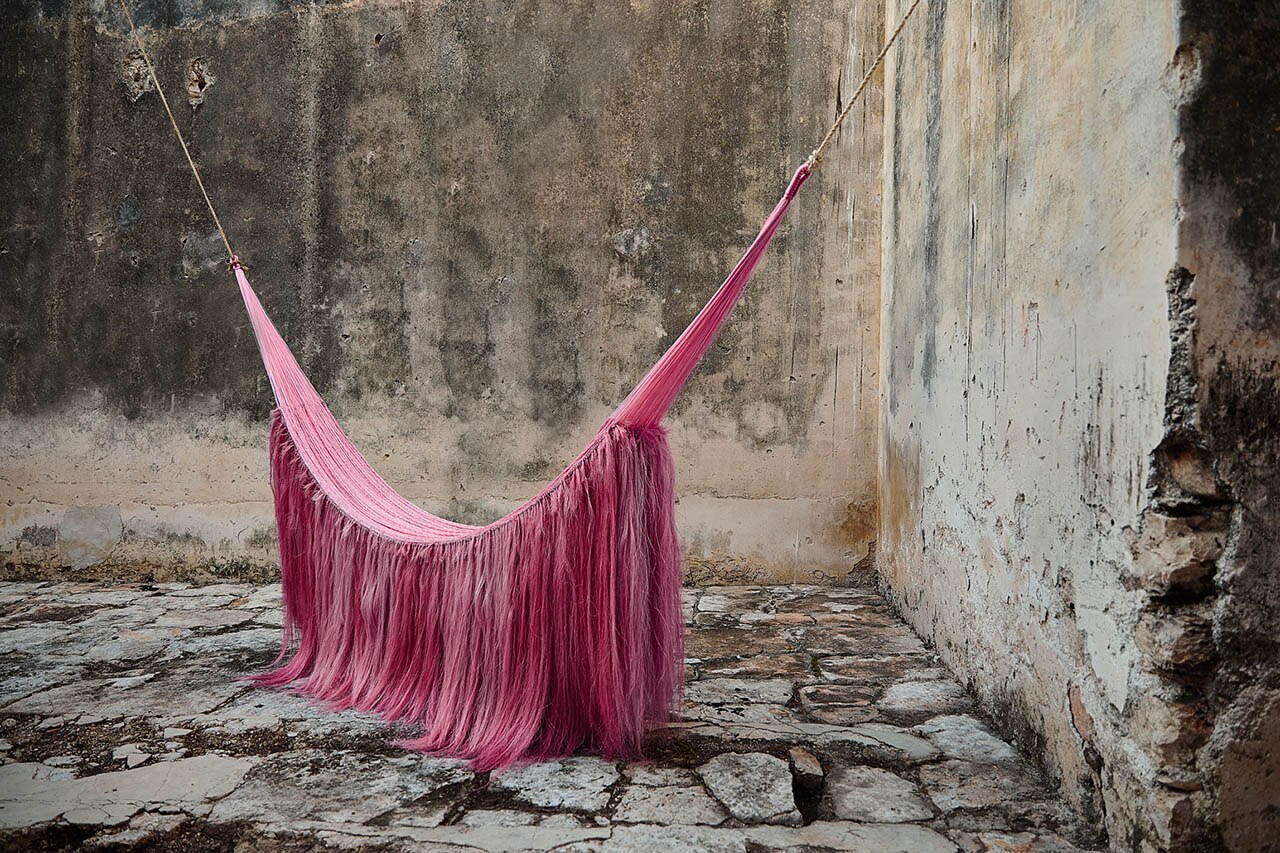
 View gallery
View gallery
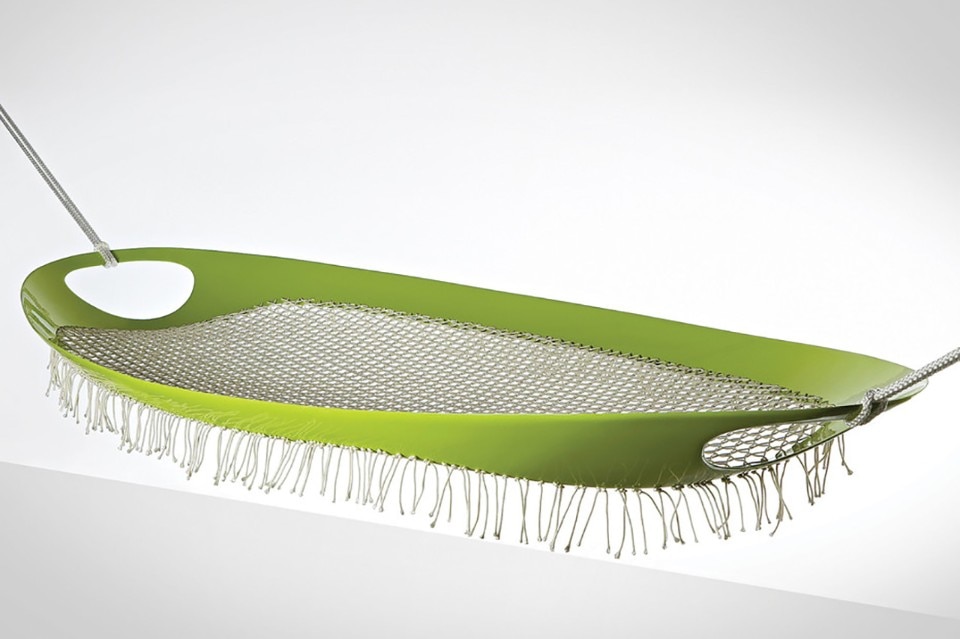
Leaf hammock, Tugrul Gövsa, Gaea Forms, 2008
A hammock that cannot be folded up, but thanks to the unique oval ring in reinforced polyester, it takes the form of a real outdoor furniture: designed to offer an ideal ergonomic support for sleeping, Leaf can accommodate up to 2 people. The ropes inside the structure can be replaced individually, ensuring greater product longevity.
Glass fibre reinforced polyester, Dacron. Dimensions 114 x 260 x 20 cm.
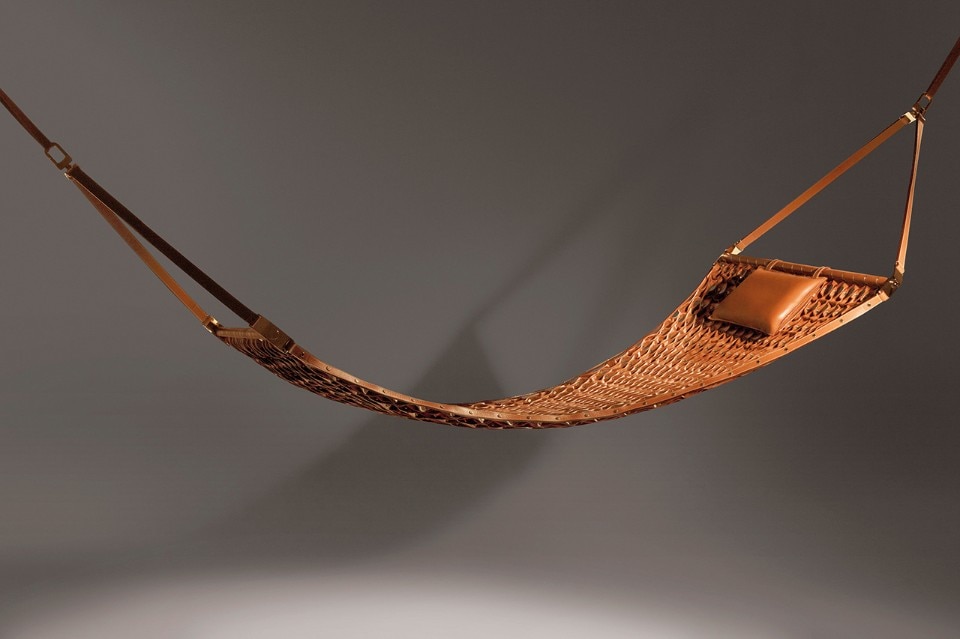
The Hammock, atelier oï, Louis Vuitton Objets Nomades, 2012
Conceived for the Objets Nomades collection that the French luxury brand Louis Vuitton has been building over the years around the theme of nomadism and transformable furniture, The Hammock stands out for the particular weave of long leather strips stopped by 786 rivets, a reinterpretation of high craftsmanship savoir-faire that gives the hammock a new pattern.
Leather, steel, microfiber, aluminium and brass. Dimensions 345 x 40.0 x 98 cm.
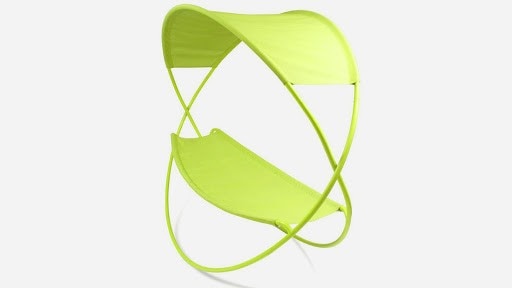
Osmose, Sakura Adachi, Fermob, 2013
Foldable if required, its self-supporting double ring tubular steel structure can be used outdoors as well as indoors. The fabric inserts, including the upper one that works as a sunshade, can be removed thanks to special zips.
Steel and textilene. Dimensions 180x 243 x 80 cm.
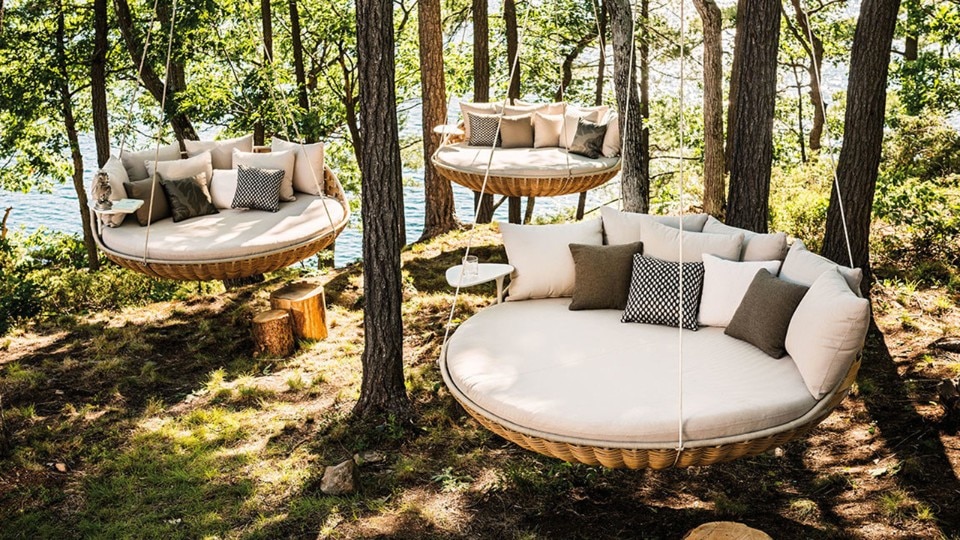
Swingrest Hanging Lounger, Daniel Pouzet, Dedon
Rocking with an aluminium structure and a high density polyethylene woven rope, it offers itself as a suspended space with the appearance of a collective nest. A small integrated side table ensures a support surface that can rotate 180 degrees.
Aluminium structure, dimensions 196 x 400/490 x 193 cm.
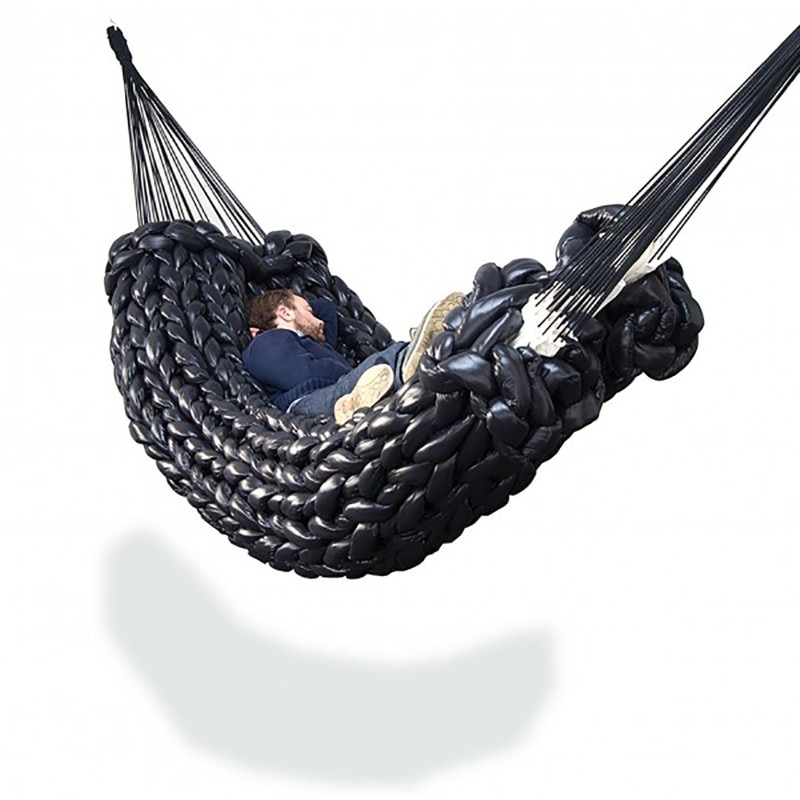
N°28 Climate Confusion Assistance, Bless
Maximalist expression of the hammock by virtue of the imposing thickness of the threads and the depth of the black colour, it stands out for the knitted weave that charactherizes numerous dresses and accessories produced by the duo composed of Desiree Heiss and Ines Kaag.
Nylon, polyester. Dimensions 140 x 100 cm.
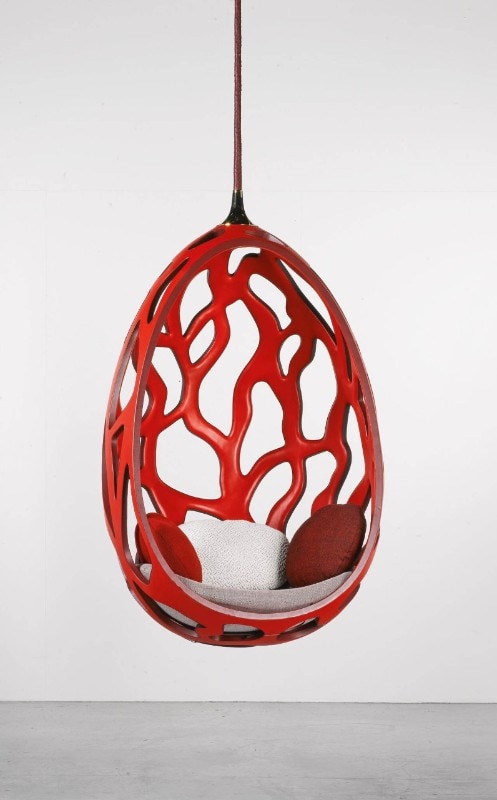
Cocoon Brothers Bell, Louis Vuitton, 2015
A vitalist re-interpretation of the tropical theme so dear to the two Brazilian brothers, Cocoon stands out for its high handcrafted finishes including in particular the treatment of the leather, which is smooth on the outside and quilted on the inside.
Structure in fibreglass, upholster in calfskin. Dimensions 79.5 x 135 x 82 cm.
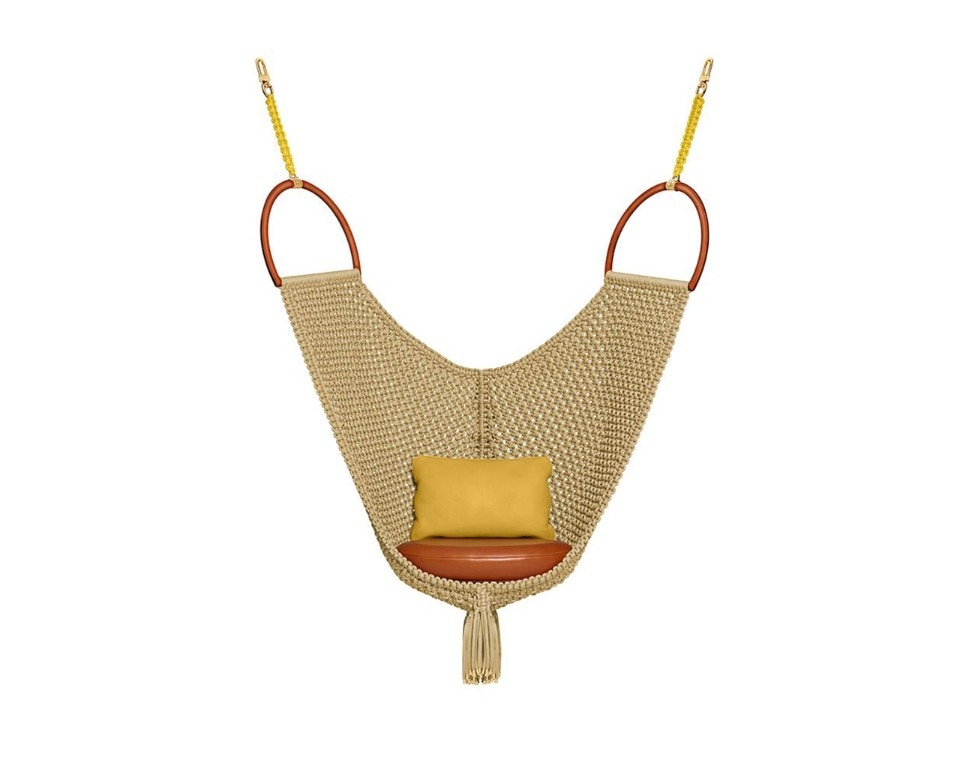
Swing Chair, Patricia Urquiola, Objets Nomades, Louis Vuitton, 2015
A happy encounter of materials and shapes such as metal rings, richly woven polyurethane mesh, leather cushions and gold coloured metal clips, Swing Chair stands out for the graphic character that comes from the balance between its heterogeneous components.
Nylon rope, golden brass, leather. Dimensions 75.0 x 210.0 x 75.0 cm.
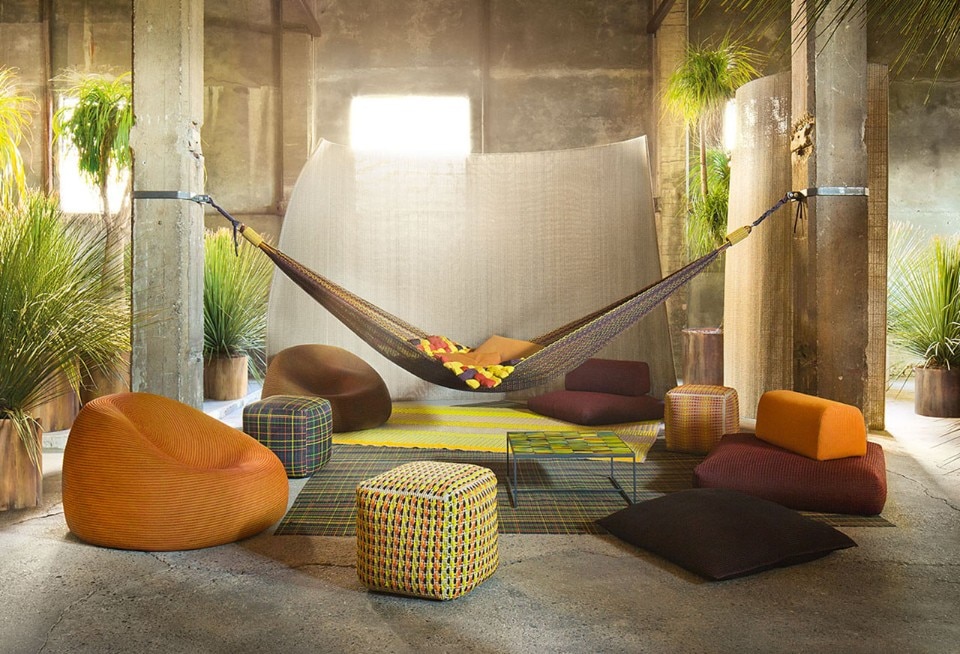
Farniente, Paola Lenti, 2017
Completely made of fabric, Farniente comes to life from the encounter between the different colours of the textures, a distinctive feature of Paola Lenti's furniture research.
Fabric Wefts in Rope yarn, tubular knit Chain Outdoor in colors matched to the fabric, stainless steel suspension system. Dimensions 400 x 125 cm.
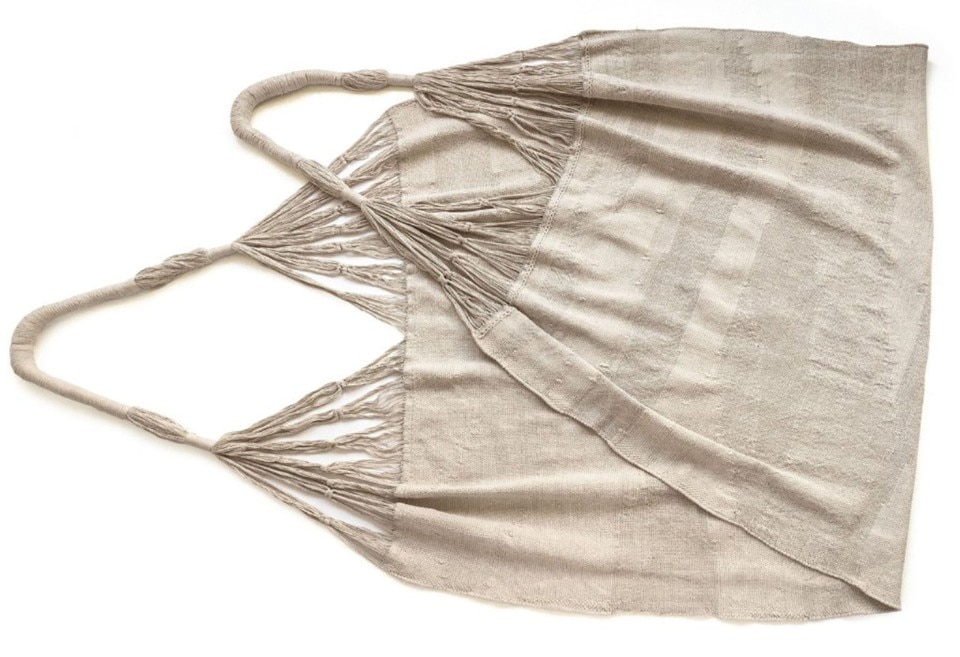
Wellbeing, Ilse Crawford, Nanimarquina
Ode to the sensory component of the materials, the hammock designed by Studioilse is distinguished by the choice of natural short chain fibers spun by hand without bleach or dyes.
100% Cotton. Dimension 366 x 130 cm.
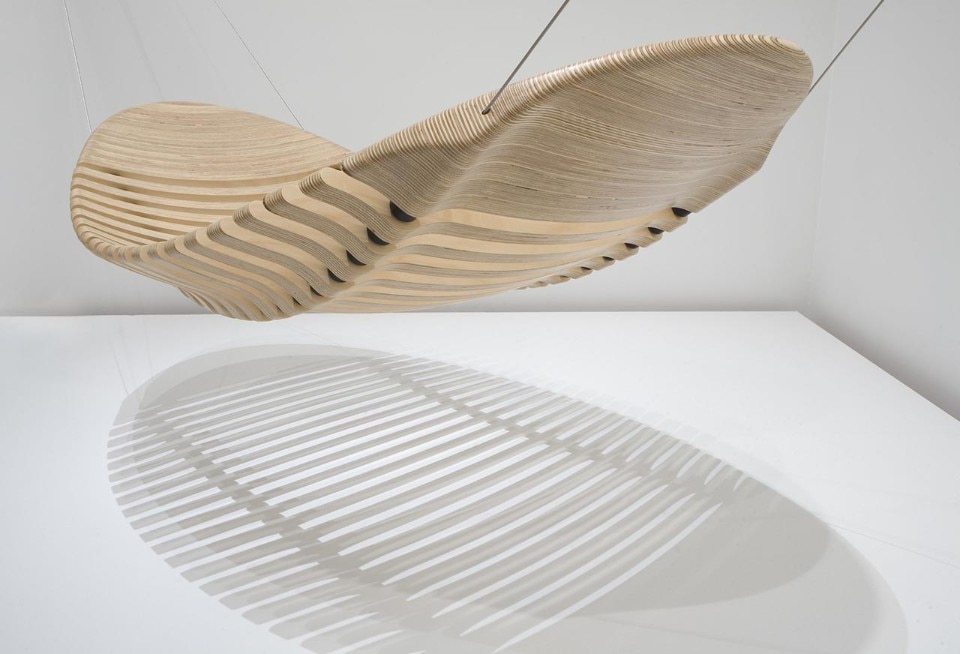
Wooden Hammock, Adam Cornish, 2017.
The result of an assembly between boomerang shaped plywood modules and rubber spacers, Wood Hammock questions the expectations related to the performance of the materials through the identification of a new ergonomic comfort.
Plywood, rubber..
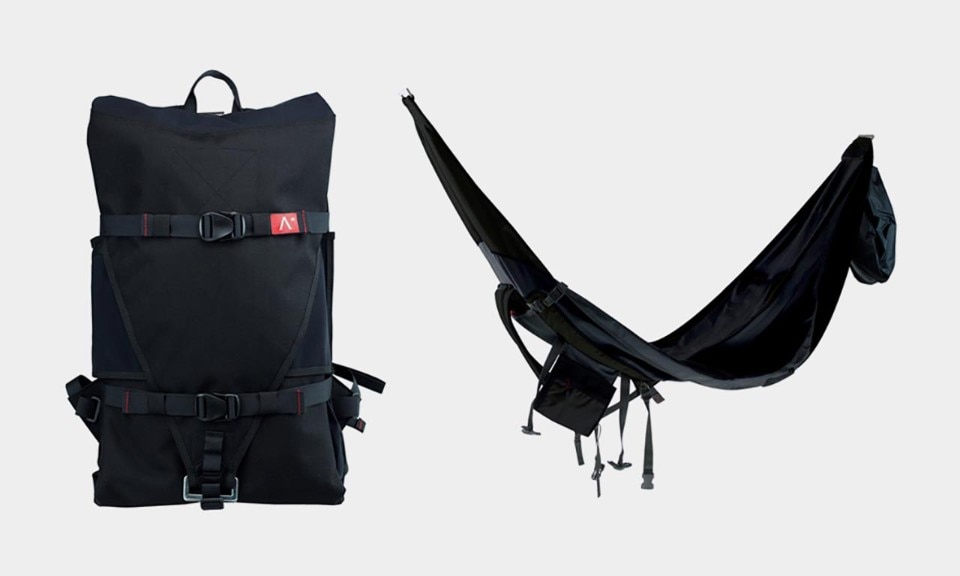
Nomad Hammock, 2018
A contemporary evolution of the transportable hammock, Nomad Hammock can be folded into a hiking backpack where personal items can also be stored. It is made of Cordura, a waterproof material that also guarantees full ventilation.
Cordura, nylon. Dimensions 50 x 30 x 15 cm (backpack).
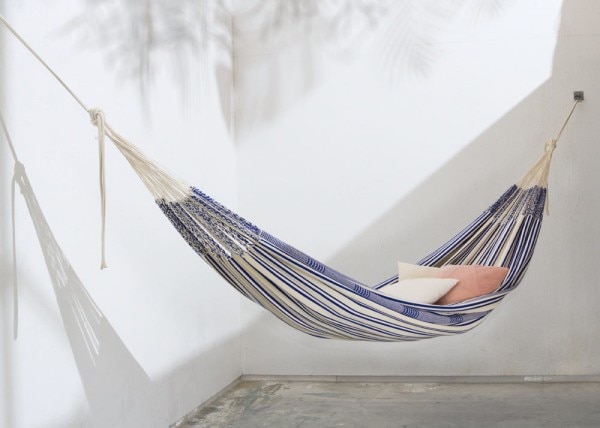
Maka, Yaiza Dronkers Londoño
Designed as a thesis at the Design Academy in Eindhoven, Maka is the result of an exercise in revitalizing traditional Colombian hammock production techniques through the design of new geometries.
Wool and cotton.
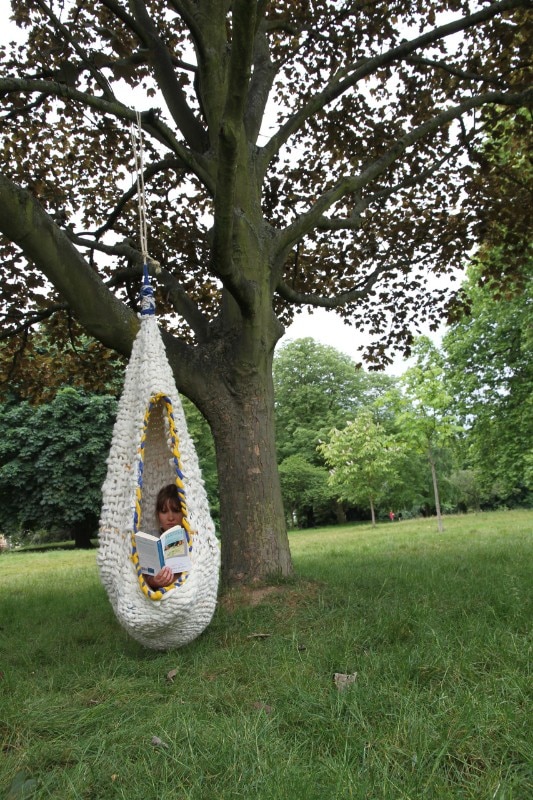
Urban retreat, Pia Wüstenberg, Utopia and Utility, 2017
A small shelter adaptable to green spaces as well as the city, this small suspension cocoon made with a very thick wire combines the techniques of spinning and knitting to enhance the protective and welcoming appearance of the material.
Wool and cotton.
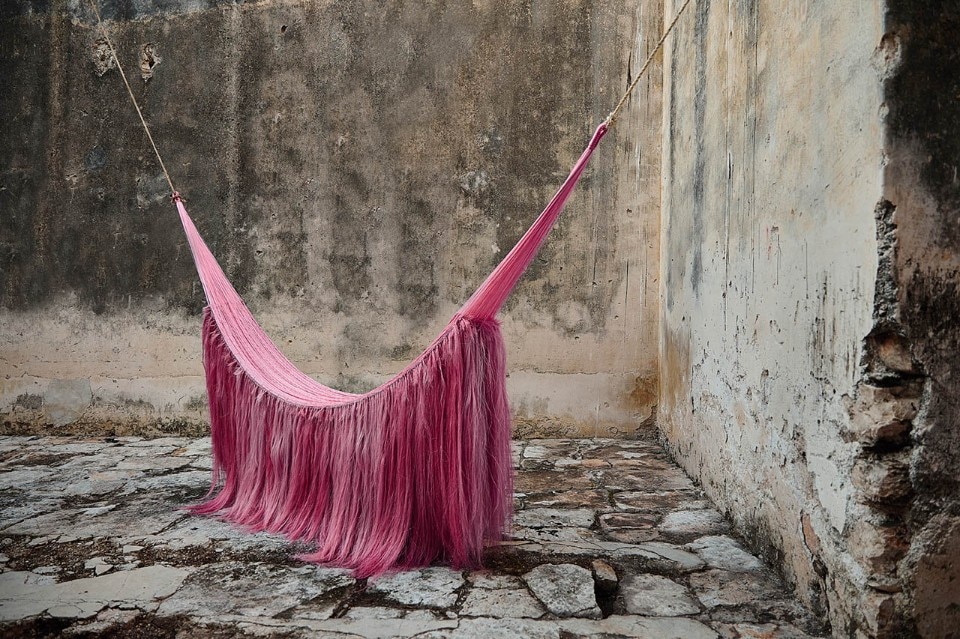
Pink Beasts, Fernando Laposse, 2019
Presented as an installation at Design Miami District in 2019 along with other objects produced by Mexican artist Fernando Laposse, the hammock - developed in collaboration with fabric designer Angeka Damman - is made of sisal, a fiber obtained from agave boiled in a substance obtained from cochineal to take on the specific pink color. The production process is thus a sustainable paradigm that avoids the use of plastic and polluting dyeing processes.
Sisal.

Leaf hammock, Tugrul Gövsa, Gaea Forms, 2008
A hammock that cannot be folded up, but thanks to the unique oval ring in reinforced polyester, it takes the form of a real outdoor furniture: designed to offer an ideal ergonomic support for sleeping, Leaf can accommodate up to 2 people. The ropes inside the structure can be replaced individually, ensuring greater product longevity.
Glass fibre reinforced polyester, Dacron. Dimensions 114 x 260 x 20 cm.

The Hammock, atelier oï, Louis Vuitton Objets Nomades, 2012
Conceived for the Objets Nomades collection that the French luxury brand Louis Vuitton has been building over the years around the theme of nomadism and transformable furniture, The Hammock stands out for the particular weave of long leather strips stopped by 786 rivets, a reinterpretation of high craftsmanship savoir-faire that gives the hammock a new pattern.
Leather, steel, microfiber, aluminium and brass. Dimensions 345 x 40.0 x 98 cm.

Osmose, Sakura Adachi, Fermob, 2013
Foldable if required, its self-supporting double ring tubular steel structure can be used outdoors as well as indoors. The fabric inserts, including the upper one that works as a sunshade, can be removed thanks to special zips.
Steel and textilene. Dimensions 180x 243 x 80 cm.

Swingrest Hanging Lounger, Daniel Pouzet, Dedon
Rocking with an aluminium structure and a high density polyethylene woven rope, it offers itself as a suspended space with the appearance of a collective nest. A small integrated side table ensures a support surface that can rotate 180 degrees.
Aluminium structure, dimensions 196 x 400/490 x 193 cm.

N°28 Climate Confusion Assistance, Bless
Maximalist expression of the hammock by virtue of the imposing thickness of the threads and the depth of the black colour, it stands out for the knitted weave that charactherizes numerous dresses and accessories produced by the duo composed of Desiree Heiss and Ines Kaag.
Nylon, polyester. Dimensions 140 x 100 cm.

Cocoon Brothers Bell, Louis Vuitton, 2015
A vitalist re-interpretation of the tropical theme so dear to the two Brazilian brothers, Cocoon stands out for its high handcrafted finishes including in particular the treatment of the leather, which is smooth on the outside and quilted on the inside.
Structure in fibreglass, upholster in calfskin. Dimensions 79.5 x 135 x 82 cm.

Swing Chair, Patricia Urquiola, Objets Nomades, Louis Vuitton, 2015
A happy encounter of materials and shapes such as metal rings, richly woven polyurethane mesh, leather cushions and gold coloured metal clips, Swing Chair stands out for the graphic character that comes from the balance between its heterogeneous components.
Nylon rope, golden brass, leather. Dimensions 75.0 x 210.0 x 75.0 cm.

Farniente, Paola Lenti, 2017
Completely made of fabric, Farniente comes to life from the encounter between the different colours of the textures, a distinctive feature of Paola Lenti's furniture research.
Fabric Wefts in Rope yarn, tubular knit Chain Outdoor in colors matched to the fabric, stainless steel suspension system. Dimensions 400 x 125 cm.

Wellbeing, Ilse Crawford, Nanimarquina
Ode to the sensory component of the materials, the hammock designed by Studioilse is distinguished by the choice of natural short chain fibers spun by hand without bleach or dyes.
100% Cotton. Dimension 366 x 130 cm.

Wooden Hammock, Adam Cornish, 2017.
The result of an assembly between boomerang shaped plywood modules and rubber spacers, Wood Hammock questions the expectations related to the performance of the materials through the identification of a new ergonomic comfort.
Plywood, rubber..

Nomad Hammock, 2018
A contemporary evolution of the transportable hammock, Nomad Hammock can be folded into a hiking backpack where personal items can also be stored. It is made of Cordura, a waterproof material that also guarantees full ventilation.
Cordura, nylon. Dimensions 50 x 30 x 15 cm (backpack).

Maka, Yaiza Dronkers Londoño
Designed as a thesis at the Design Academy in Eindhoven, Maka is the result of an exercise in revitalizing traditional Colombian hammock production techniques through the design of new geometries.
Wool and cotton.

Urban retreat, Pia Wüstenberg, Utopia and Utility, 2017
A small shelter adaptable to green spaces as well as the city, this small suspension cocoon made with a very thick wire combines the techniques of spinning and knitting to enhance the protective and welcoming appearance of the material.
Wool and cotton.

Pink Beasts, Fernando Laposse, 2019
Presented as an installation at Design Miami District in 2019 along with other objects produced by Mexican artist Fernando Laposse, the hammock - developed in collaboration with fabric designer Angeka Damman - is made of sisal, a fiber obtained from agave boiled in a substance obtained from cochineal to take on the specific pink color. The production process is thus a sustainable paradigm that avoids the use of plastic and polluting dyeing processes.
Sisal.
Having some privacy when living in shared home environments is an ever-growing psychological need. This is why the primordial charm of the hammock - with its suspended rocking, but also its enveloping nature, almost like a curtain - is renewed in very private and confined spaces, often obtained from external resulting spaces, in full visual continuity with the house, but protected from prying eyes.
Occupy the street (or roof)
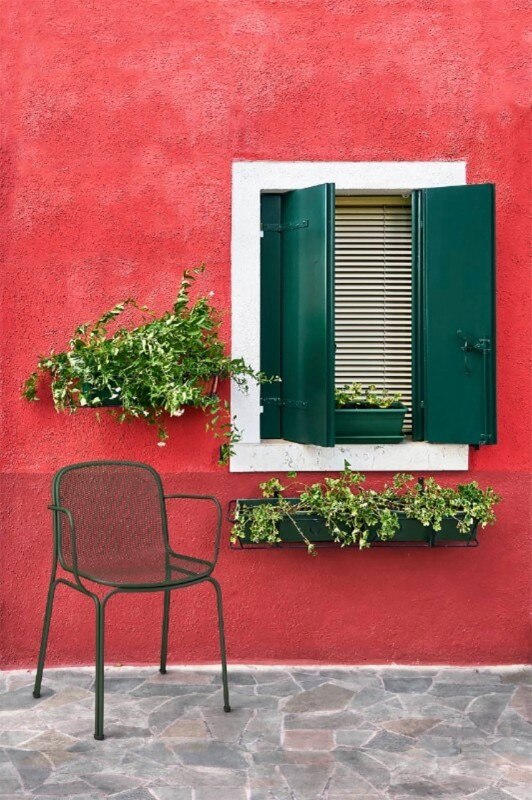
 View gallery
View gallery

Due sedie di metallo adattabili a interni e giardini
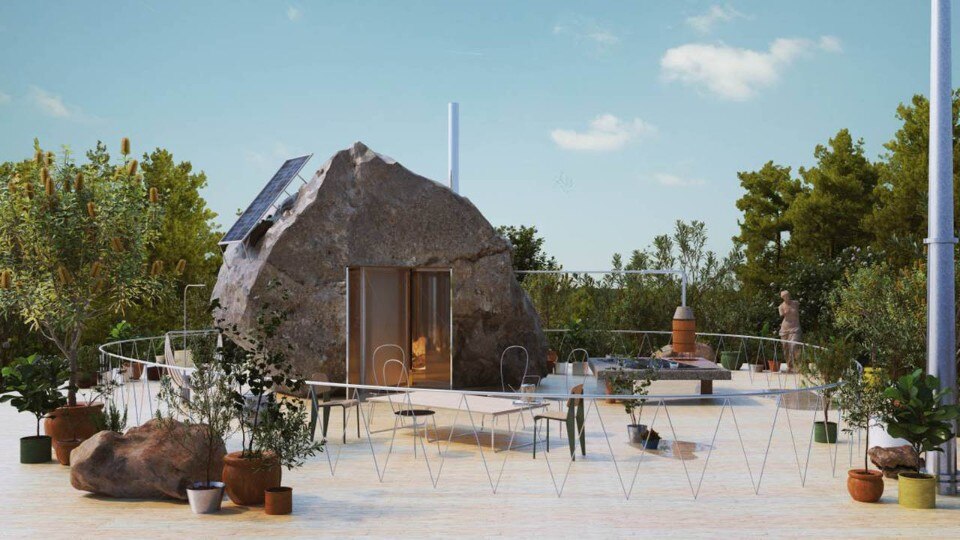
Come saranno le case del futuro in Australia
Rendering Charles Cho
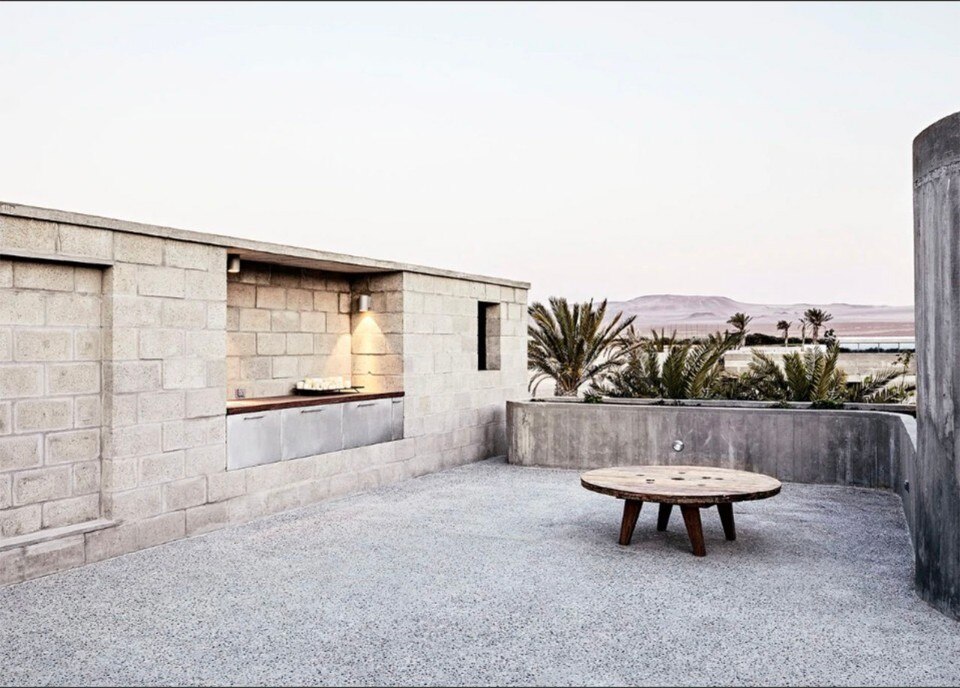
Una villa in Perù scandita da angoli inaspettati
Foto Iván Salinero
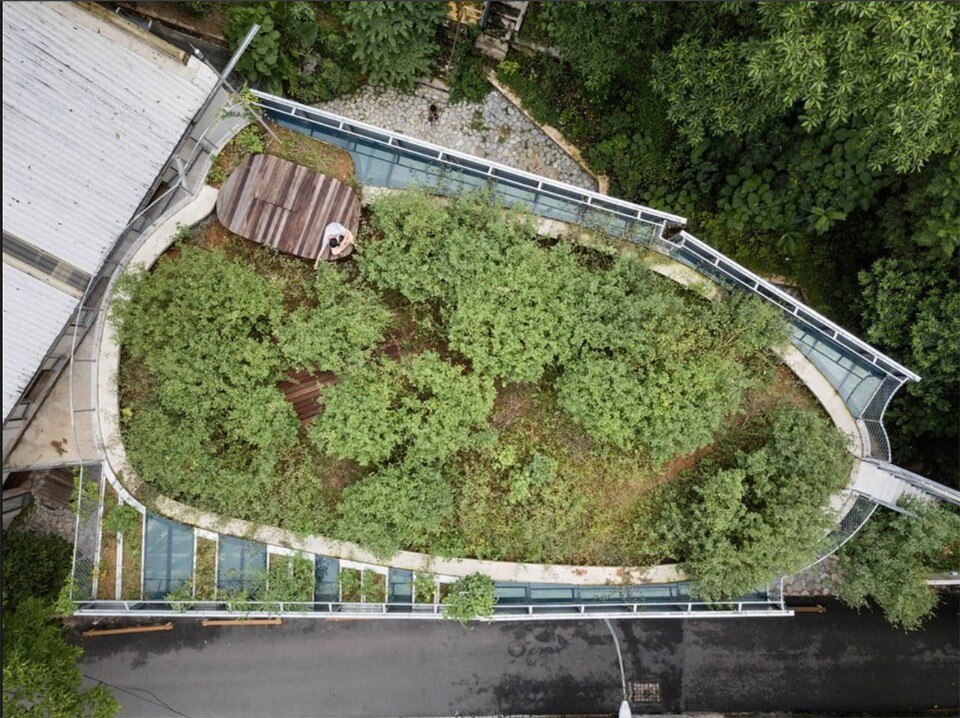
A Kuala Lumpur una struttura coloniale abbandonata diventa centro per le arti
Foto Fabian Ong
Respect the proliferation of the third landscape, incorporating the new architecture into the pre-existing spontaneous greenery, but also make use of mobile furniture that, without asking permission, anarchically invade the street and roofs. Nature and construction exchange roles, each occupying the space of the other, in yet another case of fluidity that once again tells of our desire to break the clear boundaries between public and private, nature and inhabited space.
Fireplace
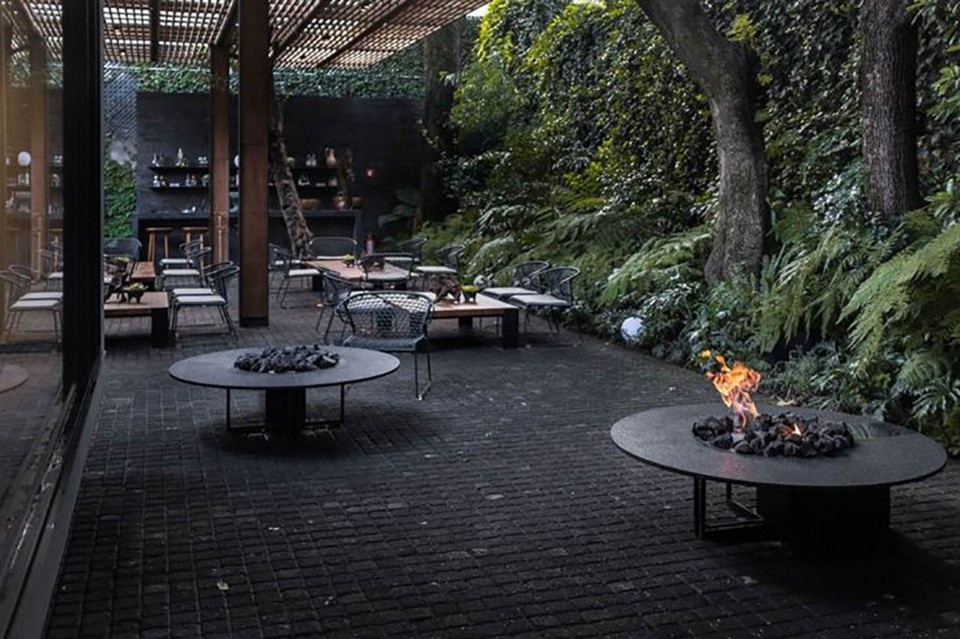
The charm of the fire is celebrated with an outdoor furniture that captures an archetypal essence: UMO, a fire pit made of volcanic rock, envelops the flames while turning into a ritual object that draws to meditation.
Tent in the garden
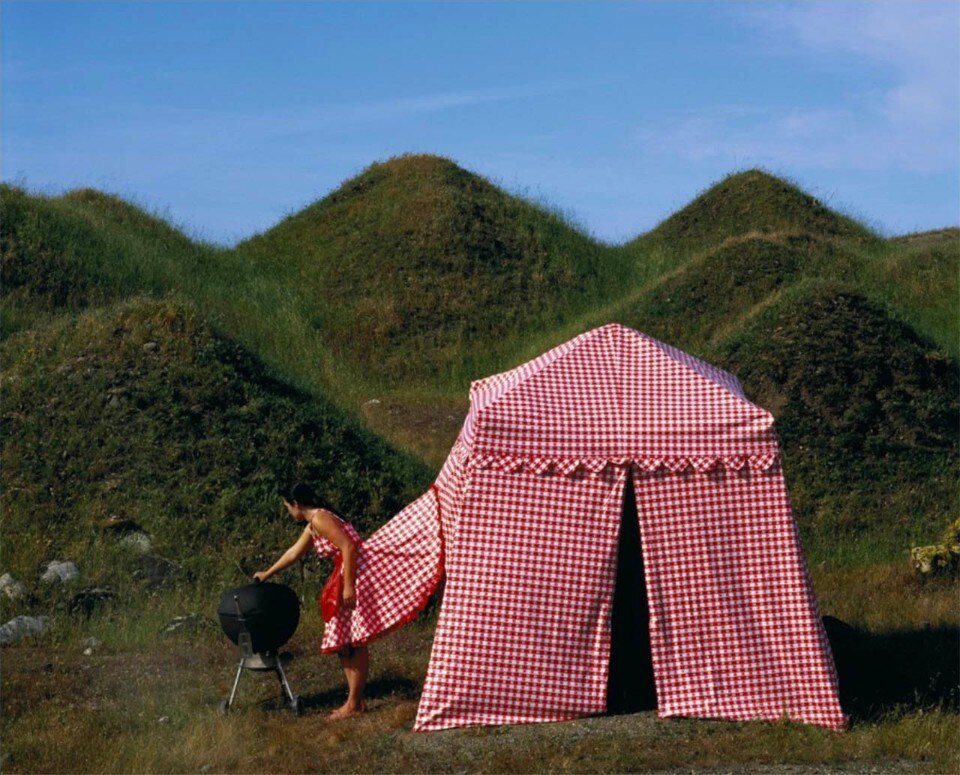
 View gallery
View gallery

Dress Tents
Foto 48'' W x 40'' H. Stampa cromogenica
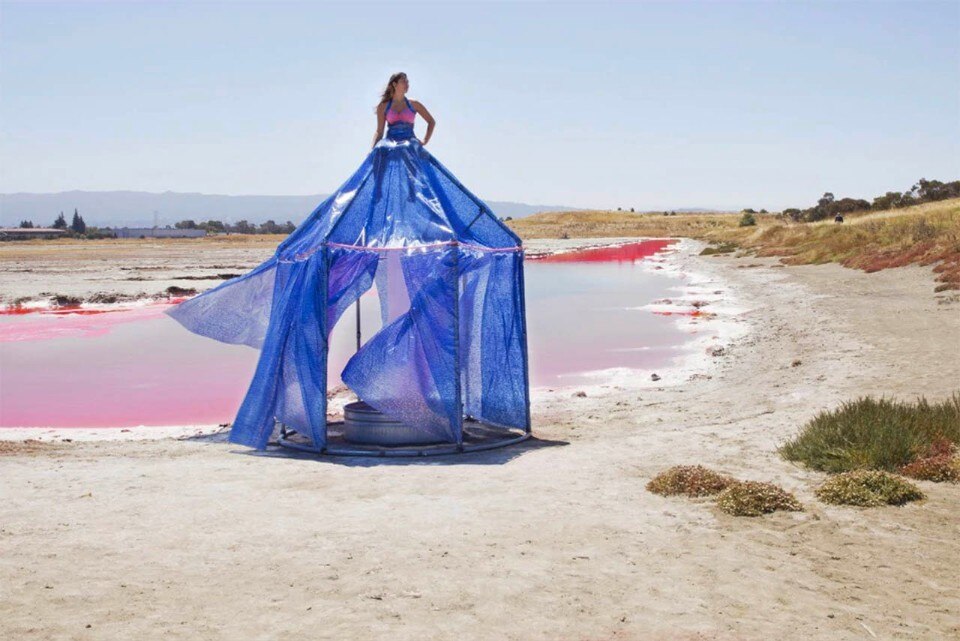
Dress Tents
Foto 30” W x 36” H. Stampa cormogenica
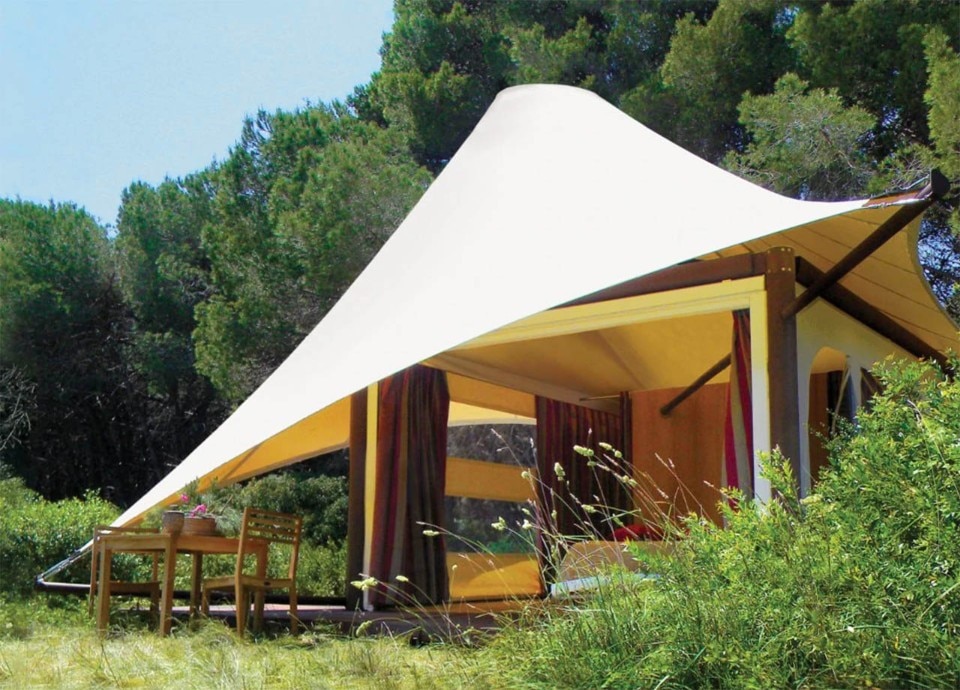
Mediterraneo: quando il campeggio non rinuncia alle comodità
The new temporary structures in open spaces take the form of a mobile tent to be revisited with creative impulse. With multiple drapes, it gives life to installations that impose themselves for the rhythmic characterization of space. Again, the tent lives again in provocative and ironic forms, such as those of a dwelling-slash-dress. In the glamping version, it is an accomplice of comfort in the form of a tensile structure with sculptural features.
Opening image: The Godown di Ling Hao Architects a Kuala Lumpur. Photo Fabian Ong.


